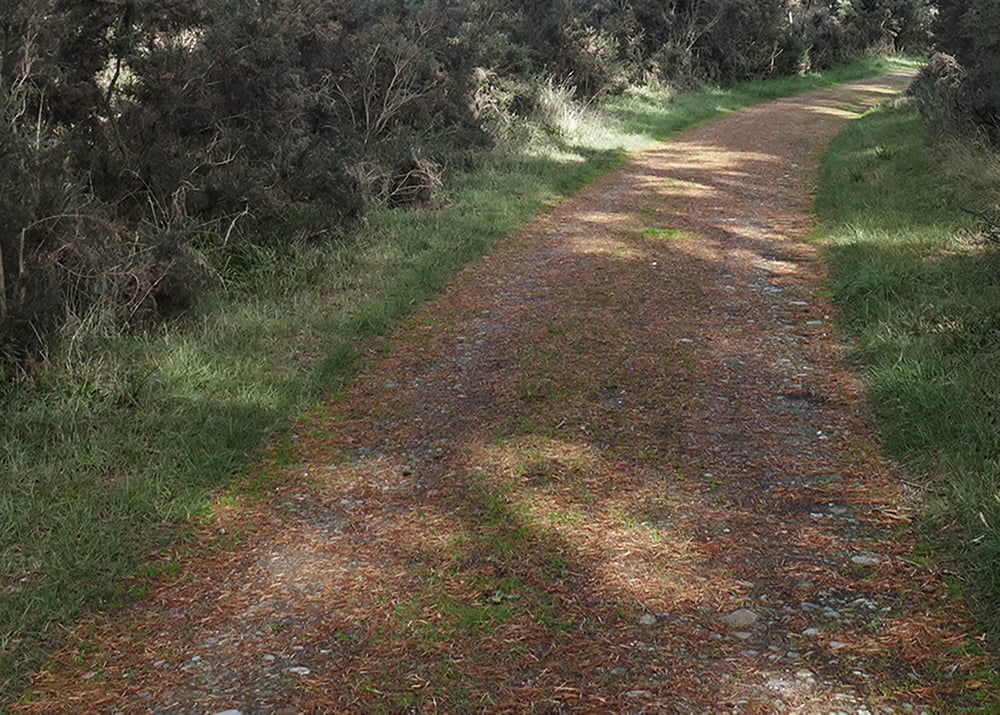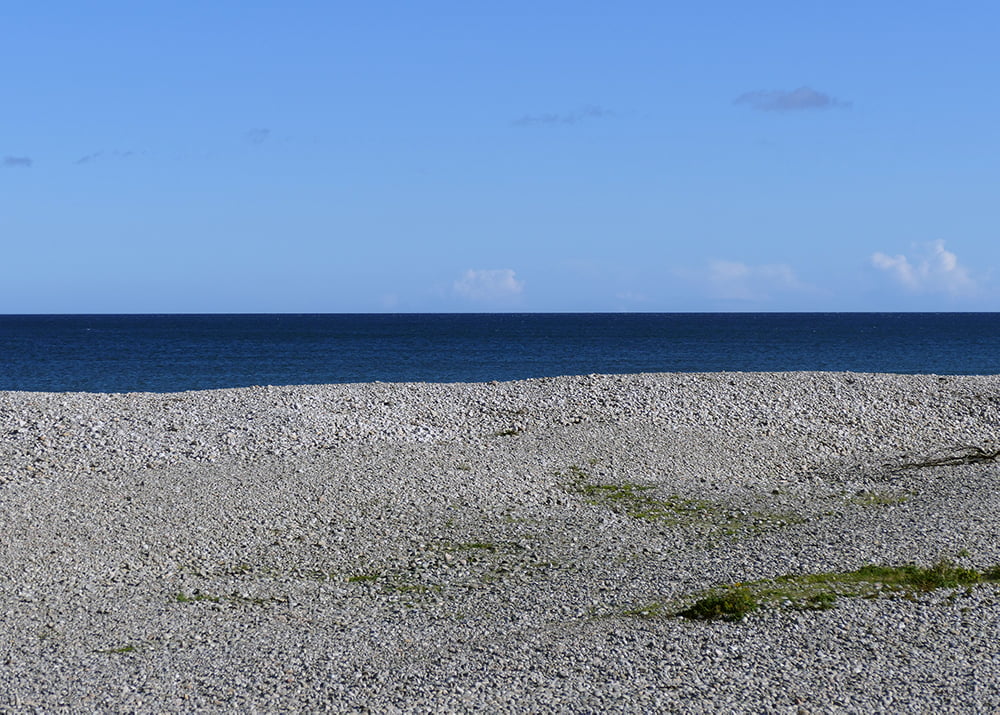What’s hidden along the path to Fochabers?

I saw many cyclists on my last visit to the Garmouth Viaduct, so I decided to cycle from Spey bay to Fochabers. My journey began at the Speyside Dolphin Centre, where I noticed the layers between land and sea. An in-between space of shingle, grass, and marsh. As an artist, my experience of place is often complex, and I’m always searching for hidden things. I was unaware that my focus on this journey would be on the surface of the earth.

Yet, the secret was in the name…
“The name Fochabers, with its various spellings over the centuries, is thought to derive from the Gaelic ‘foth’ = land and ‘abar’ or ‘eabar’ = marsh.” [1] Moray Council
It had been heavy rain the day before my journey. It was windy but, the sun was shining and, there was a musty smell of earth. I cycled along a bumpy path avoiding puddles. It was a pleasant experience with views of farmland, forest, and big sky. Whether I walk or cycle, it is always slow. A couple of mountain bikers swiftly passed by and, this gave me confidence in my decision to cycle. However, I soon dismounted my bike due to overgrown grass on a section of the path.
Hindsight leads to Foresight…
My bike is a multi-purpose/road bike and, it has always been good on most surfaces but not long grass. Undeterred, I walked on and pushed my bike until I was back on a woodland path. Unfortunately, this path was muddy and, a few times, a bike wheel would slip. I think this route would have been better without my bike, especially after heavy rain. It was a bumpy ride, and I was continuously looking at the ground for hidden tree roots on the narrow path.
I began to notice the in-between spaces. For example, the riverbank, the marshes, and scrubland are natural boundaries. It was easy to see a border of low bushes at the edge of the woodland and a line of grass and trees roots submerged at the riverbank. The plant and wildlife in these areas are mixed. I later found out that these extraordinary areas are called Ecotones.
“The transition zone between two ecosystems is called an ecotone. These areas are very rich in species diversity and promote gene flow between two communities.” [2] ScienceABC
Ecotones are in-between spaces that can alter depending on the environment. For example, if the water level changes over time, the Ecotone area would eventually move with that change. I will be keeping an eye on these in-between spaces as they are a visible sign of a change in the climate.
[1] Moray Council. (2015). Moray Community Planning Profile. Available: http://www.yourmoray.org.uk/ym_standard/Page_104822.html. Last accessed 19th Dec 2021.
[2] Sharma, B. (2021). What Is An Ecotone?. Available: https://www.scienceabc.com/nature/what-is-an-ecotone.html?fbclid=IwAR2bU4TjqCZ-eXJXPeH6bt82LsVNtPbveUreBceUmKKLGnfI01jsuYsLGJg. Last accessed 19th Dec 2021.




